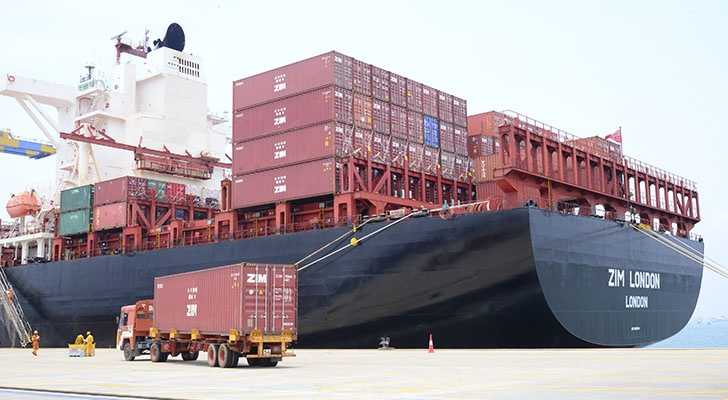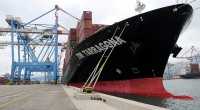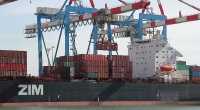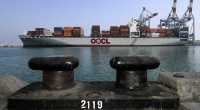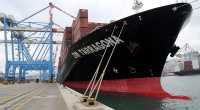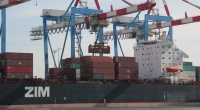ZIM Ends the Second Quarter with an Improvement in all operational parameters compared with the previous quarter.
The company recorded an EBITDA of $36 million, compared with a negative EBITDA of $6 million in the previous quarter – a $42 million improvement, despite difficult market conditions and further decrease in freight rates in Q2.
ZIM continues to enjoy full support from all its creditors that have agreed to continue the process of reaching the new business plan. This agreement is a major and significant step towards a long-term plan that will enable financial stability in the face of multiple challenges and changing market conditions, and is a testimony of the trust the company enjoys from all parties involved.
As a part of the company's efficiency plan, ZIM has reached an agreement with the company's employees' union and the General Federation of Labor (Histadrut) over early retirement of 100 of the company's employees.
With the continuing support of all creditors, including the vessel and container lenders, ship owners, shipyards, unsecured lenders and bond holders, ZIM continues to negotiate an agreed long-term comprehensive solution to the capital and debt structure that will enable financial stability in the face of the multiple challenges and the volatile market condition.
These negotiations are made possible thanks to the continued trust of all creditors which have agreed to further adjustments and concessions. The lenders agreed to waive some of the financial covenants for the negotiations period and also to further delay, to Q3/2015, deferred amounts that were due to be paid at year-end, 2014. The ship owners agreed to continue to receive reduced amounts until the end of the year, and, similar to the lenders, agreed to postpone the repayments of those amounts to Q3/2015.
Revenues in Q2 amounted to $976 million, which reflect an increase of 6% compared with the previous quarter. The growth in revenues, despite a decrease in the average freight rates per TEU, which went down 3%, compared with the previous quarter (from $1,282 per container in the previous quarter to $1,246 per a 20ft container (“TEU”) in the current quarter), was achieved mainly due to a 5% increase in volume of carried TEUs, to 631 thousand TEUs.
ZIM's operational loss amounted to $5 million (excluding one-time cost of $24 million for employees early retirement) compared with an operational loss of $47 million in the previous quarter – a $42 million improvement.
Operating cash flow in Q2 amounted to $5 million, compared with a negative operating cash flow of $28 million in the first quarter, a $33 million improvement.
In the bottom line ZIM recorded in the quarter a $72 million loss (excluding one-time cost of $24 million for employees early retirement) compared with a loss of $110 million – a $38 million improvement.
The positive results come inspite of slow market conditions in the shipping industry which remain challenging as new-builds continue to enter the market, a trend that preserves a supply surplus and creates a downwards pressure on the freight rates. In order to meet these challenges ZIM continues to implement internal efficiency measures and at the same time continues to negotiate with all its creditors with the purpose of achieving a long-term solution for its capital and debt structure and creating a stable and sound base to allow the company to keep being competitive in the future.
In conclusion, it should be noted that in this quarter too, similarly to previous quarters this year, ZIM's operational results are in par with the industry average, which demonstrates the considerable improvement in the company’s performance and the improvement of its competitive position. The company continues to take efficiency measures and to implement its strategic plan in order to further improve its results in the future. The combination of operational improvements on the one hand, and the proper examination and evaluation of possible changes in market conditions on the other, should provide for another leap in the company's performances in the coming years compared with the industry.
